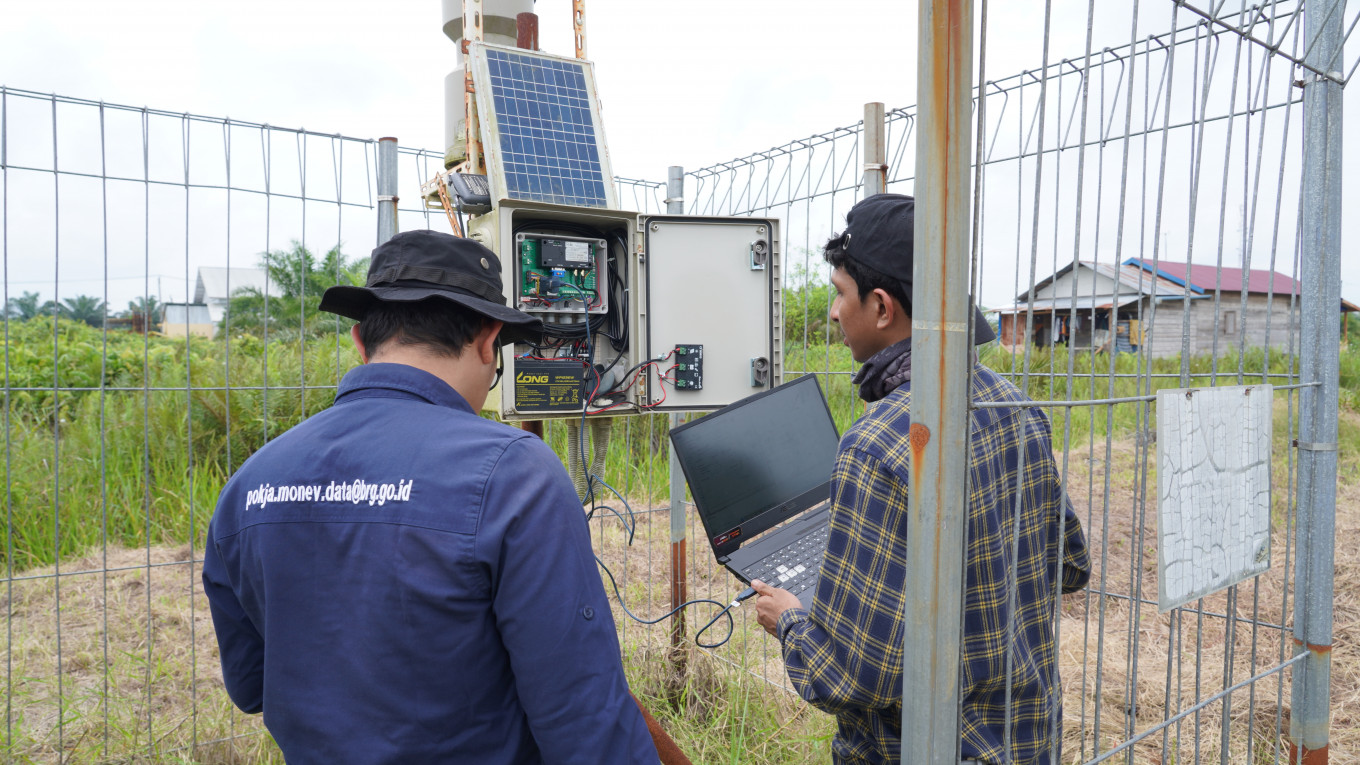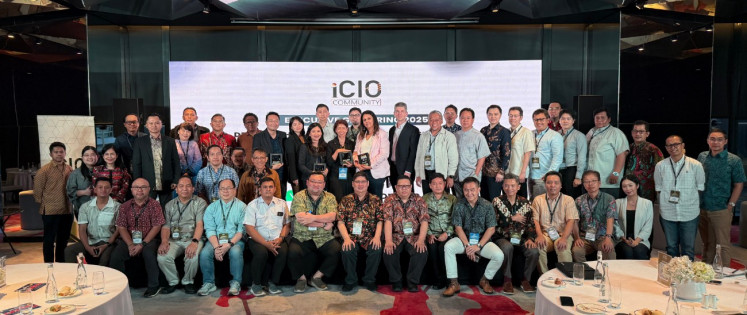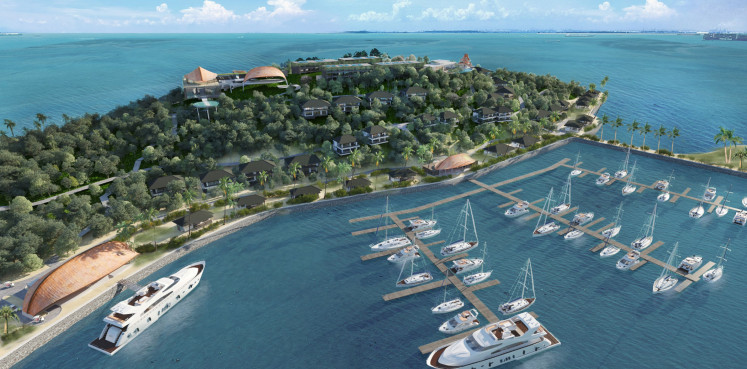Popular Reads
Top Results
Can't find what you're looking for?
View all search resultsPopular Reads
Top Results
Can't find what you're looking for?
View all search resultsEnsuring safe peatland
Change text size
Gift Premium Articles
to Anyone
D
egraded and dry areas of peatland are the cause of forest fires that spread quickly, and they are difficult to extinguish. Meanwhile, people generally deliberately dry out peatland so it can be used for agriculture – but without considering the consequences.
Currently, the government is attempting to ensure that peatlands do not dry out and become degraded because peatland has functioned as a water source for life in the surrounding areas and it has an important role in mitigating climate change. The government is currently making definite but gradual efforts to restore dry and damaged peatland, which is known to be one of the factors causing the spread of forest fires. The Peat and Mangrove Restoration Agency (BRGM) is targeting the restoration of 1.2 million hectares of peatland in seven priority provinces. This is an effort to stop forest and land fires that occur every year.
As part of these restoration efforts, and to ensure the availability of peat water, the government has installed Groundwater Level Monitoring Infrastructure (GWLMI). The infrastructure is needed to determine whether peatlands were initially damaged and how government intervention affects the condition of the peatlands and their water content.
Peatland restoration must be monitored in terms of its effectiveness in keeping groundwater at the required levels. The height of the groundwater level in peatland is measured from the peat’s surface to the peat groundwater level. One measure of the success of peat restoration is if damaged and dry peatland has again become moist, which means it has a water content of 0.4 meters from the surface. How do we monitor the groundwater level? The groundwater level can be monitored using special infrastructure, namely GWLMI. GWLMI is also an instrument installed for monitoring the hydrological conditions of a peatland hydrological unit (PHU). Water does come from rain in the rainy season, but can this water still be maintained during the dry season? This certainly raises questions about the effectiveness of the BRGM's execution. Are the canal blocks built by the government to hold back peat water working as expected? What is the condition of peatland during the dry season? How do we have to anticipate forest fires? The GWLMI provides the answer.
So far, according to Amalia, the head of the Monitoring and Evaluation Working Group at the BRGM, 153 GWLMI units have been installed in six provinces where the BRGM is working to rewet the damaged peatlands. In order to carry out its task of restoring damaged peatland, the government has built more than 20,000 units of both canal blocks and deep wells in priority provinces, namely Riau, Jambi, South Sumatra, West Kalimantan, Central Kalimantan and South Kalimantan. These six provinces suffered the most from forest and land fires in 2015.
Where did the BRGM install the 153 units of GWLMI? The GWLMI is situated and spread out at the targeted PHUs in peat ecosystems, which are located between two rivers, between the river and the sea and/or in a swamp. The Hydrological Response Unit (HRU) is part of the PHU where the BRGM considered and calculated the location of where GWLMI was built. The HRU is the smallest peat restoration management unit that has the same hydrological characteristics and is limited by peat ridges and/or canals that influence the water system in the sub-PHU or PHU area.
The GWLMI may consist of several components, including a) a sensor for measuring rod or water level, b) a soil moisture sensor, c) rainfall sensor data loggers and/or d) other supporting equipment. A team was assigned to build the GWLMI. The GWLMI should be easy to reach to facilitate maintenance and installation. First comes first, the team carries out a field validation to ensure the suitability of the GWLMI installation location by paying attention to the following: First, GWLMI should be easy; second, a mobile network must exist for sending data to the operations room at the center to facilitate maintenance. Thus accessibility is the main concern. Last but not least is local community approval to guarantee the security of the infrastructure.
Canal blocks and deep wells built by the BRGM are infrastructure that is vulnerable to environmental conditions. Research has proven that the average durability of peat rewetting infrastructure is 3 years. Therefore, the government carries out regular maintenance to ensure the continuity of the function of the installed infrastructure. It is not easy to determine which parts of rewetting infrastructure are still functioning, which are heavily damaged and which are slightly damaged. The BRGM can carry out this effort through the SISFO application for the rewetting infrastructure information system. In real time, community groups monitoring at the location can send photos of the condition of the canal blocks and the deep wells to HQ. This way, the BRGM is able to calculate maintenance costs per year with real evidence. The SISFO application, which can be used via mobile phones belonging to people at the location, is equipped with a feature that prevents sending photos that are not in real time.
So far, the local governments have benefited from the results of GWLMI monitoring. The governor who received the BRGM head's report could immediately mobilize the Forest Fire Task Force to be on standby for peatlands that were starting to dry out because of the weather. However, this amount of GWLMI is still far from sufficient to serve a province that is still prone to forest fires as well as to prove the rewetting infrastructure is still optimally functioning.










